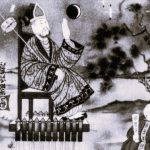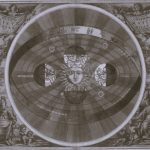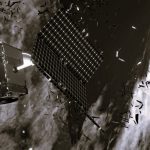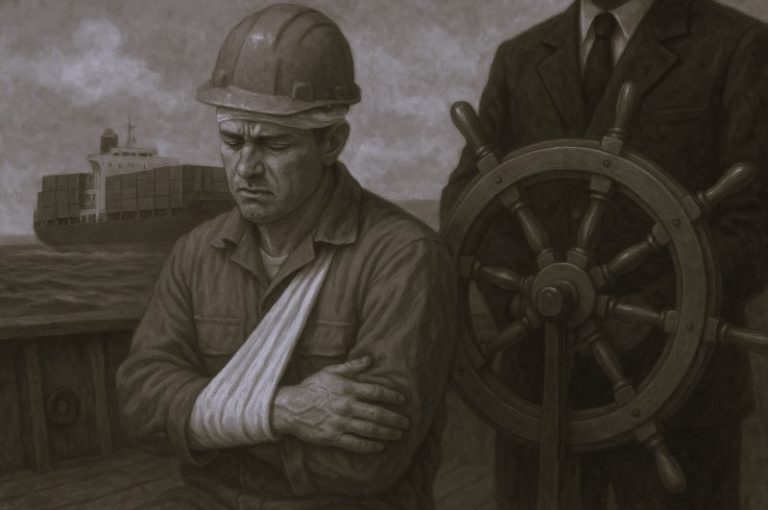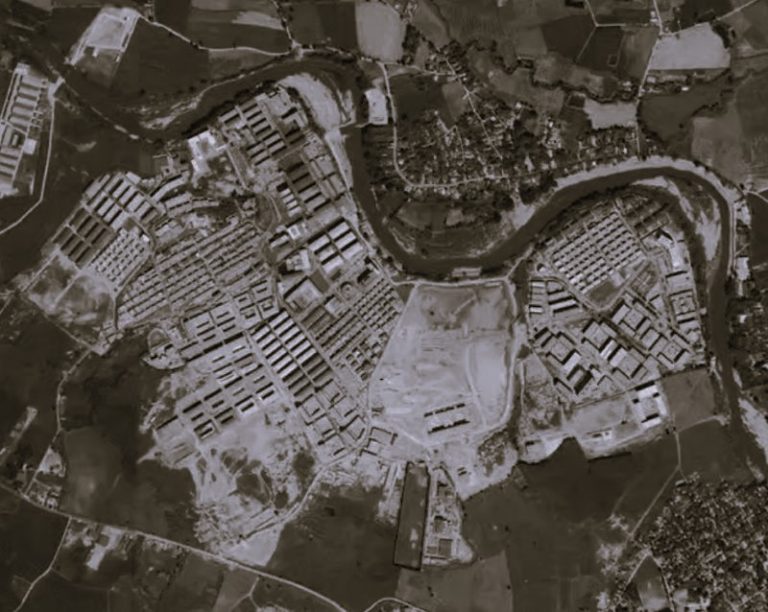
Porter gave a glimpse into a region that was largely unknown to most Europeans.

By Dr. Christopher Wright
Former Head of Manuscripts
British Library
Introduction
Sir Robert Ker Porter’s accounts of his travels in the Middle East gave a glimpse into a region that was largely unknown to most Europeans. His original watercolours provide a compelling visual source and are both descriptive of their settings and beautiful works of art in their own right. Christopher Wright recounts Porter’s journey into an unfamiliar and enchanting landscape.
The 16th-century playwright Christopher Marlowe causes his hero Tamburlaine to reflect that it is ‘passing brave to be a King, / And ride in triumph through Persepolis.’ Alluding as this does to the conquests of Alexander the Great, it captures the hold which the ancient cities of Persia and Iraq had on the European imagination. However, in an age before photography, few had seen them and the very location of most of them had been forgotten for millennia. Whereas Napoleon’s invasion of Egypt, 1798–1801, accompanied by savants and draughtsmen, had given a powerful stimulus to Egyptology, leading directly to the decipherment of hieroglyphs by Champollion in the 1820s, most of the important sites of the Middle East were in the early 19th century still known only from Biblical accounts and the writings of classical authors.
This situation was slowly changing. Persepolis – begun as a ceremonial capital by the Persian ruler Darius I at the end of the 6th century BCE – had been visited by many artists and explorers. This included Pietro della Vallee in the 17th century, followed by, amongst others, Sir John Chardin and Engelbert Kaempfer, and in the 18th century, by Cornelis de Bruijn and by Carsten Niebuhr (the latter of whom had produced accurate drawings of the rock-cut inscriptions in the undeciphered cuneiform (wedge-shaped) script).
In 1812 James Justinian Morier, who had been secretary to a British mission to the Shah of Persia, published his A Journey through Persia, Armenia, and Asia Minor to Constantinople, in the years 1808 and 1809. This was followed in 1821 and 1822 by the two volumes of Sir Robert Ker Porter’s Travels in Georgia, Persia, Armenia, Ancient Babylonia, &c. &c. during the years 1817, 1818, 1819 and 1820. This provided the public with a hitherto unrivalled portrayal of the area and its antiquities.
Who Was Ker Porter?

Born in 1777, his precocious artistic talent had persuaded Sir Benjamin West to admit him to the Royal Academy schools in 1791 when he was only 13. An associate of John Sell Cotman and Thomas Girtin, he made his name in 1800 with The Storming of Seringapatam. This colossal panorama, 200 feet long and 2,550 feet square, contained nearly 700 figures, portraying the battle the preceding year at which the British had defeated Tipu Sultan, the ‘Tiger’ of Mysore. Completed in six weeks, it was exhibited at the Lyceum Theatre with great success.
Given its subject, it is perhaps no surprise that Ker Porter was attracted to a military life, becoming in 1803 a Captain in the Westminster Militia. However, his family dissuaded him from serving as a regular soldier and in 1805 Tsar Alexander I invited him to St Petersburg to paint murals in Peter the Great’s Admiralty building, which he was reconstructing.
In Russia, Ker Porter married Princess Mary Scherbatoff in 1812. It was her kinsman Alexis Olenin, savant, antiquary, Director of the Imperial Public Library and President of the Imperial Academy of Arts, who encouraged Ker Porter to travel to Persia (Modern Iran) and Mesopotamia (Modern Iraq) to make accurate drawings of their antiquities.
Ker Porter’s Travels
Ker Porter set out in August 1817, heading for Georgia. His descriptions of his journey reveal the romantic sensibility of the period. The mountains he had seen in Portugal and Spain had not prepared him for the vastness and grandeur of the Caucasus, such as ‘Elborus [Elbrus], amongst whose rocks tradition reports Prometheus to have been chained … towering above all, its white and radiant summits mingling with the heavens.’ Fortunately, he was particularly adept at drawing the mountainous scenery he encountered as shown by his watercolour of the Pass of Derial [Dariali].

He arrived at Tiflis [Tbilisi], the capital of Georgia, on 24 October 1817 and travelled on through Armenia into Persia, reaching Teheran [Tehran] in March 1818. It was then a town of about 60,000 inhabitants and had become the capital of Persia only 30 years earlier. It was surrounded by a ditch with mud walls, and each of the four gates was guarded by a circular fort. The view of Teheran he sketched shows it against the backdrop of the Elburz Mountains and the snow-capped Mount Demavend [Damavand], with the Isphahan [Isfahan] road leading from the south gate. The Persians were just about to celebrate their New Year, Nowruz, which marks the spring equinox. It was at a public audience during these festivities that Ker Porter first met the Persian ruler, Fath-Ali Shah. He had succeeded to the throne in 1797 on the assassination of his uncle Agha Mohammad, first monarch of the Qajar dynasty, and reigned until 1834. The sovereign’s approach was intimated by ‘the appalling roar of two huge elephants trained to the express purpose’. Ker Porter continued: ‘I never before had beheld anything like such perfect majesty … He was one blaze of jewels, which literally dazzled the sight.’

As the summer heat began to increase Ker Porter travelled south to Isphahan and then on through the Zagros Mountains to the archaeological sites north-east of Shiraz. In June 1818 he reached the ruins at Mourg-Aub, which Morier, whose work he was using as a guide, had first identified as Pasargadae, the capital of Cyrus the Great (died 528 BCE). It lies 30 miles northeast of Persepolis. Here, amongst other antiquities he drew a pillar, the sole survivor of four, which once flanked the doorway of a ceremonial building.
Ker Porter was struck by the beauty of the relief: ‘It reminded me so entirely of the graceful simplicity of design which characterizes the best Grecian friezes that I considered it a duty … to copy the forms before me, exactly as I saw’. He also correctly noted the Egyptian origin of the Hemhem crown which the figure is wearing. He carefully transcribed from the pillar a cuneiform inscription, now lost. This announces ‘I, Cyrus the King, an Achaemenian’, in three languages, Old Persian, Elamite, and Babylonian. He sent the inscription to the German philologist G. F. Grotefend, who correctly recognised in it the name of Cyrus.

Following the lead given by Morier, Ker Porter went on to identify an impressive structure amongst the ruins, known by the locals as the Tomb of the Mother of Solomon, as, in fact, the sepulchre of Cyrus the Great.

Leaving Pasargadae, he then explored the nearby cliffs called Nakshi-Roustam [Naqsh-e Rustam] by the locals, who associated the Sassanian reliefs carved there with the legendary Persian hero Rustam. In fact, as Ker Porter recognised, one shows the defeat of the Romans at the Battle of Edessa in 260 by Shapur I, son of Ardashir I, who had overthrown the Parthian Empire in 224. He assumed the kneeling figure was the captured Emperor Valerian. In fact, it is Valerian who is standing while Philip the Arab, who made peace with the Sassanians after their defeat of Gordian III in 244, is kneeling. Ker Porter thought these reliefs showed artistic traces of Roman influence.

Above the Sassanian reliefs the tombs of four Achaemenid Kings had been chiselled out of the rock many centuries earlier. Ker Porter visited one of the tombs, being hauled up to it on a rope, an episode he shows in his watercolour. He speculated correctly that the tomb covered with several hundred lines of inscriptions was that of Darius I, writing of them ‘What a treasure of information doubtless was there to the happy man who could decipher it! It was tantalizing to a painful degree, to look at such a “sealed book,” in the very spot of mystery, where, probably, its contents would explain all.’

After visiting the neighbouring Sassanian reliefs at Nakshi-Rajab [Naqsh-e Rajab] – which he recognised also portrayed Shapur I – on 23 June 1818, Ker Porter arrived at Persepolis, known in Persian as Tacht-i-Jamshid (The Throne of Jamshid), a legendary Persian ruler. In his time, it was the only famous city of Babylonian, Assyrian, or Persian antiquity of which significant remains still stood, and was therefore one of the main goals of his journey.
Although in ruins, the ancient capital of Persia, founded by Darius I (died 486 BCE) and partially destroyed by Alexander the Great in 331 BCE, still conveyed some idea of its former splendour. Ker Porter was not disappointed. On ascending the platform on which the ‘Palace of Forty Pillars’ rose, he mused: ‘nothing can be more striking than the view of its ruins; so vast, and magnificent, so fallen, mutilated and silent.’
At first sight, he thought the ruins betrayed Egyptian influence, but such was the exquisite carving of the friezes he believed that Grecian artistry could be discerned.

He was also particularly impressed by the human-headed winged bulls. He spent a week at the site, making meticulous copies of everything he saw, before, on 1 July 1818, setting out for Shiraz. His account of Shiraz concludes the first volume of his Travels.

Returning to Isphahan, he then travelled on through Hamadan. This, as Ecbatana, had been the ancient capital of Media though no evidence of its ancient grandeur now remained. On 21 September 1818 he reached Bisitun [Be-sitoon/Behistun] east of Kermanshah. Here, there was a great bas-relief on the rockface. It was difficult to approach and Ker Porter did so with some peril to himself. He thought it showed Salamaneser [Shalmaneser], King of Assyria, destroying the Kingdom of Israel in 722 BCE.
In fact, it portrays Darius I overcoming his enemies and gives an account of his reign in three languages, Old Persian, Elamite, and Babylonian. This is often called the Rosetta Stone of cuneiform. Ker Porter realised the importance of the texts and regretted so little progress had been made towards deciphering ‘these apparently oldest letters in the world’. He recognised that, when they were deciphered, ‘what a treasure-house of historical knowledge would be unfolded here’. Crucially, however, he did not copy the inscriptions himself. He thought that to do so accurately would have taken him a month and could only be accomplished at great personal risk.

On 3 October 1818 Ker Porter crossed from Persia into the Ottoman Empire and on 14 October, reached Baghdad. Here he was welcomed by the British Resident, the brilliant oriental scholar Claudius James Rich and his equally talented secretary, Karl Bellino. Rich had made the first accurate surveys of the ruins of Babylon and Nineveh. On 10 November, accompanied by Bellino, Ker Porter reached the ruins of Babylon, a series of mounds on the Euphrates near Hillah. Over 60 pages of the Travels were to be devoted to the description of these and their surroundings.

On 12 November he was at Birs Nimrood [Birs Nimrud/ Borsippa] in the desolate plain east of the Euphrates, 11 miles southwest of Babylon. An isolated mound 200 feet high, it is topped by ruins. Now known to have been the ancient city of Borsippa, both Niebuhr and Rich, following Arab tradition, wrongly believed it to be the site of the Tower of Babel. On the ruins of this Nebuchadnezzar was said to have built his temple to Baal. Ker Porter argued that what survived were the bottom three platforms of this eight-storey ziggurat, which is described by Herodotus.
On a second visit to this site Ker Porter’s party were startled by lions. He wrote: ‘I could not help reflecting on how faithfully the various prophecies had been fulfilled which related in the scriptures, to the utter fall of Babylon … verifying, in fact the very words of Isaiah – “Wild beasts of the desert shall lie there; and the houses shall be full of doleful creatures.”’

Ker Porter left Baghdad for Kurdistan on 2 December, and on Christmas Day reached Tabriz in Persia, where he spent four months. After a short visit to Teheran he left Tabriz on 19 October 1819 for Armenia, arriving at Erivan [Yerevan] on 27 October. On the journey he had caught his first sight of Mount Ararat ‘under the sublimest circumstances’. He then travelled on by Kars, reaching Constantinople [Istanbul] on 26 November. The city however, was ravaged by plague and he was unable to enter. Heading north for Bucharest and on to Lemberg [Lviv], he finally returned to St Petersburg on 14 March 1820. He had been away almost three years.
The Collections
Ker Porter brought back with him portfolios containing approximately 150 items, including his strikingly evocative watercolours, mostly executed in blue, grey, brown and just occasionally pink washes of the country he had travelled through and the ancient sites he had visited. He had also accumulated a small collection of antiquities, the best of which he was to present to the British Museum.
He then travelled briefly to Britain to arrange for the publication of his Travels. The firm chosen for this was Longman, Hurst, Rees, Orme and Brown, which nine years earlier had brought out Morier’s book. Ker Porter’s volumes were, however, in a different league. Whereas Morier’s Journeyhad only 25 engravings from his own designs and one of his inscriptions, Ker Porter’s Travels contained 89 plates, as well as other illustrations.
The publishers entrusted the execution of the reproductions according to a clearly defined scheme. The portraits of the Shah and the Crown Prince, Abbas Mirza, which fronted the two volumes, were engraved by William Thomas Fry. Maps, plans and inscriptions were assigned to Sidney Hall of Bury Street, Bloomsbury. Charles Heath undertook the line engravings of the antiquities and the aquatints of Ker Porter’s landscapes were produced by ‘I. Clark’, possibly John Heaviside Clark.
Though the engravers were themselves accomplished artists, a comparison of the plates which appeared in the book with the original watercolours reveals how much, of necessity, was lost. This was particularly true of the line engravings, which mostly omitted the landscape and figures Ker Porter had included to give context. They also struggled to convey the liveliness and sculptural quality of the reliefs. Even the aquatints often had to simplify Ker Porter’s work or crop it to fit the dimensions of the book. Nevertheless, the general result was to give the general public the clearest picture of ancient Persia and Mesopotamia they had yet seen.
Ker Porter spent most of the rest of his life as British Consul in Venezuela. Following his death in 1842, the British Museum acquired his drawings from his sister, the novelist Jane Porter. The heroic age of Mesopotamian archaeology was just about to dawn with Emil Botta excavating the Assyrian capital of Sargon II at Khorsabad, and Austen Henry Layard uncovering the capital of Sargon’s son, Sennacherib at Nimrud and at Nineveh.
The problem of cuneiform, however, remained. The inscriptions at Bisitun were to be key to its decipherment. Bellino had promised to transcribe them for Ker Porter, but Volume II of the Travels closes with a letter from Rich announcing Bellino’s untimely death in 1820. By the time Volume II of the work was published in 1822 Rich himself had died. It fell to Henry Creswicke Rawlinson to make squeezes of the inscriptions in 1836 and 1837. He and Edward Hincks were able to build on the work of Grotefend so that by 1857 it was clear that the script was understood. Meanwhile, with the arrival at the British Museum in the early 1850s of the winged bulls excavated by Layard at Nineveh, the public were able to see for themselves physical remains of the culture which Ker Porter had portrayed.
Originally published by the British Library under the terms of a Creative Commons Attribution 4.0 International license.

